A lovely coffee cake loaf with layers of a nut, raisin, brown sugar, cinnamon and cocoa filling in a tender vanilla loaf. This coffee cake loaf keeps for days on the counter!

This Hungarian coffee cake loaf is adapted from a Maida Heatter recipe called Budapest Coffee Cake. She makes it as a large bundt cake with a sweet icing sugar glaze. For my version, I’ve scaled the cake down to loaf size and skipped the glaze for longer and easier storage.
The resulting coffee cake loaf is just as delicious but in a format perfect for having on the counter to easily enjoy a slice with your morning or afternoon cuppa.
Ingredients and substitutions
A few notes about the key ingredients …
Sour cream – I highly recommend full-fat (14%) sour cream for this loaf, for best results. I have substituted yogurt in the past when I was short of sour cream and while it was fine, you’ll miss the tighter crumb and richer flavour of a sour cream loaf. So yes, you can substitute plain yogurt, but don’t expect it to produce the same loaf.
Walnuts – The slight bitterness of walnuts are a perfect match for the sweet brown sugar and cinnamon swirl. You could substitute pecans, if you like. For a nut-free loaf, simply omit.
Raisins – I highly encourage you to add the raisins, even if you think you’re not a raisin lover. As they are chopped and mixed with the cinnamon and sugar, they offer just a lovely fruity note that could even be mistaken for dates.
Cocoa powder – Dutch-processed cocoa powder is recommended for fuller flavour. Natural cocoa powder is fine as a substitute.
Eggs – The base recipe for one loaf calls for 1 1/2 eggs, as this recipe was scaled down from a larger recipe. If eggs are expensive where you are and you’d rather not waste 1/2 an egg, simply use 1 whole egg and add 2 Tablespoons more sour cream to the batter.
How to make Hungarian coffee cake loaf
This is a visual summary of the steps to make this coffee cake loaf. Always refer to the complete ingredient list and instructions in the Recipe Card below.



- No need to soften the butter. This loaf starts by beating the cold butter by itself until softened.
- Add the sugar to the bowl once the butter is softened and beat together for a minute or two.
- Add the eggs and vanilla and beat in.

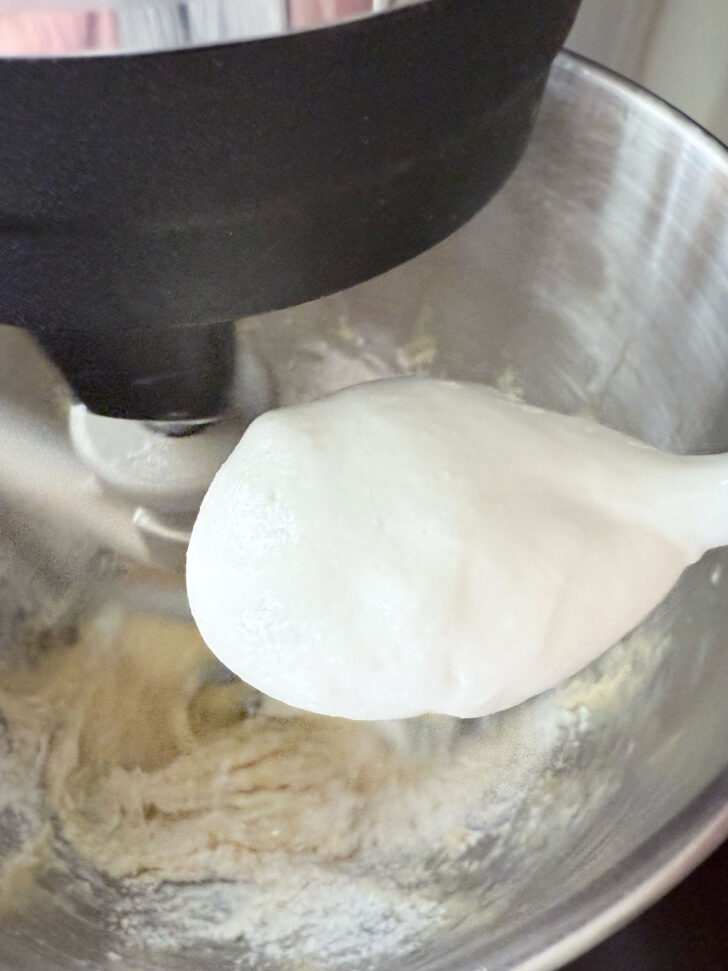

- Add about 1/3 of the flour mixture to the batter.
- Add 1/2 of the sour cream, followed by more of the flour, the rest of the sour cream and the final bit of flour.
- Mix the batter just until combined.
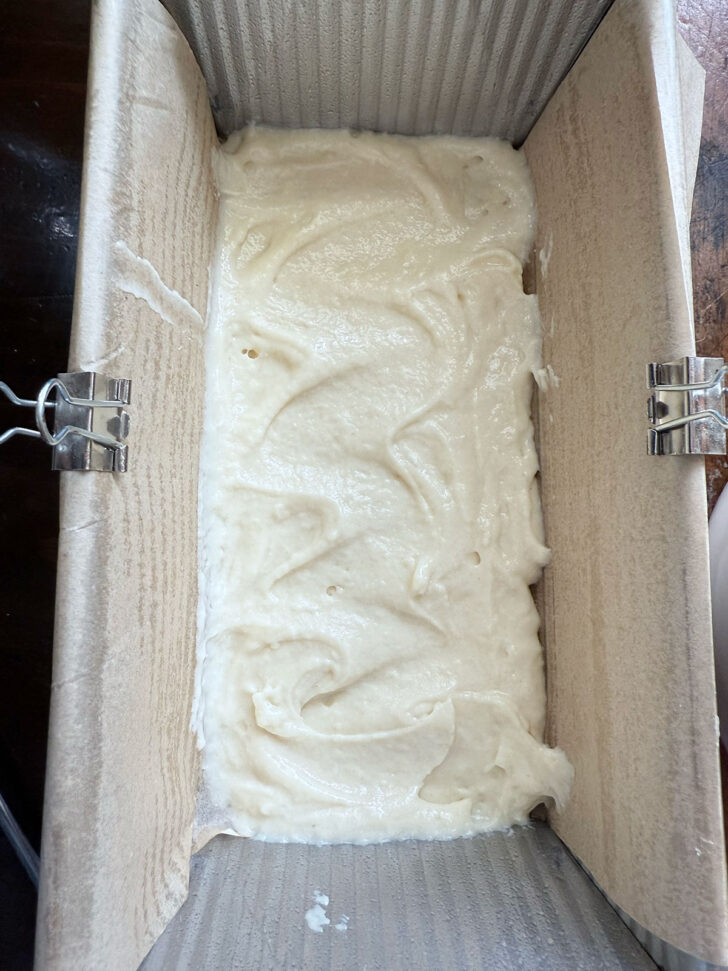


- Add about 1/4 of the batter to the prepared loaf pan.
- Top the batter with 1/3 of the filling mixture.
- Add another layer of batter to the loaf pan.


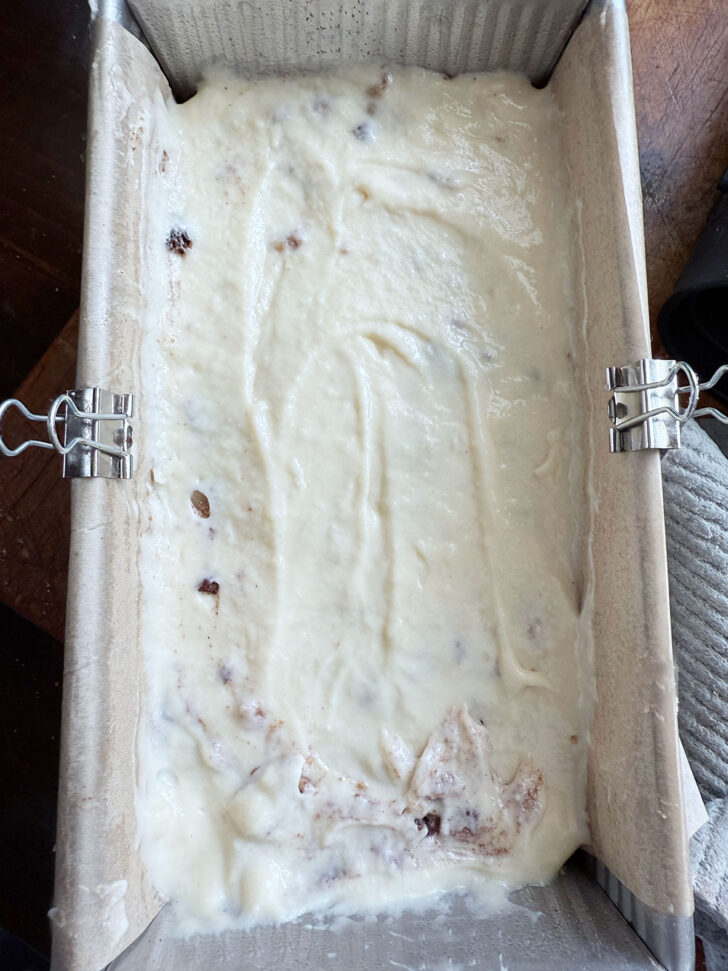
- Spread the batter out evenly.
- Add another layer of filling and batter.
- Finish with the remaining batter and filling.
Recipe tips!
- You can make this coffee cake loaf in an 8 1/2 x 4 1/2-inch loaf pan or a 4×10-inch tea cake loaf pan. I love the shorter/longer 4×10 loaf myself.
- Maida Heatter often starts her bakes with cold butter. Instead of softening, she chooses to beat the butter on its own first to soften it before adding the sugar. It’s really a genius baking hack, as it skips the step of taking butter out ahead and avoids the risk of overly softened butter. Just remember that it’s important to beat the butter by itself first before adding the sugar, as the cold, hard butter won’t incorporate with the sugar efficiently.
- If you have a glass loaf pan, be sure to reduce the oven temperature by 25 degrees F.
- When spreading the batter into the loaf pan in layers, spread the batter like you would ice a cake by spreading from the thickest part of the batter in the centre towards the outside and not making a return trip with the spoon, as that is when you will pick up bits of the filling. That said, don’t worry if you do get a bit of the filling in the batter. It will all be good in the end!

Making ahead, storing and freezing
This loaf keeps really well for 3 or 4 days stored in an airtight container at room temperature.
You can also freeze this coffee cake loaf. Wrap tightly and freeze for up to 3 months.
Want to save this recipe?
Enter your email and I’ll send it to your inbox. Plus, you’ll get great new recipes from me every week!
By submitting this form, you consent to receive emails from Seasons and Suppers.
You can unsubscribe at any time.

Get the Recipe: Hungarian Coffee Cake Loaf
Ingredients
Nut Filling:
- 6 Tablespoons dark brown sugar
- 1 1/2 teaspoons ground cinnamon
- 1 1/2 teaspoons cocoa powder, Dutch-processed recommended
- 1 1/2 Tablespoons raisins, finely chopped
- 1/2 cup walnuts, finely chopped
Cake:
- 1 1/2 cups all-purpose flour, spooned and levelled
- 3/4 teaspoon baking powder
- 3/4 teaspoon baking soda
- 1/4 teaspoon fine salt, reduce to a pinch if using salted butter
- 6 Tablespoons unsalted butter, cold, cut into 6 pieces
- 1 teaspoon vanilla extract
- 3/4 cups white granulated sugar
- 1 1/2 large eggs, *see Note 1 below
- 1 cup full-fat sour cream (14% b.f.), or full-fat plain yogurt *see Note 2 below
Instructions
- Prepare an 8 1/2 x 4 1/2-inch loaf pan or 4 x 10-inch loaf pan by spraying with cooking spray and lining the bottom and sides with parchment paper. Allow the parchment paper to extend beyond the pan on the sides by at least 1 inch, to use as handles to remove the loaf after baking. Set aside.
- Preheat the oven to 375F (non-convection/not fan-assisted). *If using a glass loaf pan, reduce the oven temperature to 350F.
- Prepare the filling by combining the brown sugar, cinnamon and cocoa powder in a small bowl. Stir to combine. Add the chopped raisins and walnuts to the bowl and stir together. Set aside.
- In a medium bowl, combine the flour, baking powder, baking soda and salt. Whisk together well and set aside.
- Add the cold butter pieces to the bowl of a stand mixer fitted with the paddle attachment or to a large bowl with an electric mixer. Beat the butter until softened, about 1 minute. Add the white sugar and vanilla and beat together on medium speed for a minute or two. Add the eggs and beat in, scraping down the bowl with a rubber spatula and beating at high speed briefly until the mixture is quite smooth.
- With the mixer on low, add about 1/3 of the flour mixture, followed by half of the sour cream, half the remaining flour, the remaining sour cream and finally the remaining flour mixture, beating only until smooth after each addition.
- Tip! You will layer the batter into the loaf pan, forming 4 layers of batter and 3 layers of filling in between. I find it helpful to roughly divide the batter into quarters in the bowl as a guide for how much to use for each layer. For the filling, use 1/3 to start, then divide the remaining filling between the next two layers.
- Spoon about 1/4 of the batter into the bottom of the prepared loaf pan and use the back of a spoon to spread the batter into an even layer. Sprinkle 1/3 of the filling evenly over the top of the batter. Add another 1/4 of the batter in small spoonfuls scattered over the top of the filling and use the back of a spoon to spread from the batter evenly over the top of the filling. Spread in one direction only from the thickest part of the batter out to avoid picking up bits of the filling in the batter. This process is similar to icing a cake to avoid picking up crumbs. Repeat layering until you have 4 layers of batter and 3 layers of filling, ending with the last quarter of batter and smoothing it level in the pan.
- Tip! *Baking times will vary from oven to oven and depending on the colour of your loaf pan. Check regularly during the end part of baking and test with a cake tester when it looks close to done. The tester should come out clean of batter (but may have a bit of the filling attached).
- Place the loaf into the preheated oven and bake for 45-50 minutes for an 8 1/2 x 4 1/2-inch metal loaf pan or about 40 minutes for a 4×10-inch loaf pan.
- Remove from the oven and allow the loaf to cool in the pan for 10 minutes, then remove the loaf from the pan and place on a cooling rack to cool completely before slicing.
- Store the cooled loaf in an airtight container at room temperature for 3-4 days. The loaf will also freeze well for up to 3 months.
Notes
Adapted from Maida Heatter’s Budapest Coffee Cake
More loaf cake recipes to love!
Hi! I’m Jennifer, a home cook schooled by trial and error and almost 40 years of getting dinner on the table! I love to share my favourite recipes, both old and new, together with lots of tips and tricks to hopefully help make your home cooking enjoyable, stress free, rewarding and of course, delicious!




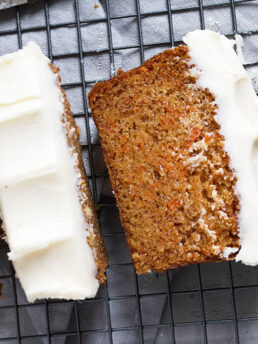
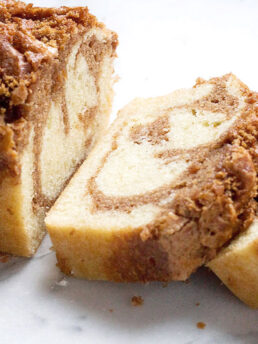

Amazing! Have made twice and found a 10 x 4 pan bakes a bit better. Moist and delicious, that touch of cocoa is the secret ingredient. Baking times do vary (as noted) – I reduced temp to 350 after 30 minutes and tented with foil for last 5 min as it was getting a bit too golden at edges. When loaf is done be sure to leave in pan 10 min. as instructed, this one really needs that time to set up. Thanks for a new tea time favorite!
So glad to hear, Mary :) Thanks so much!